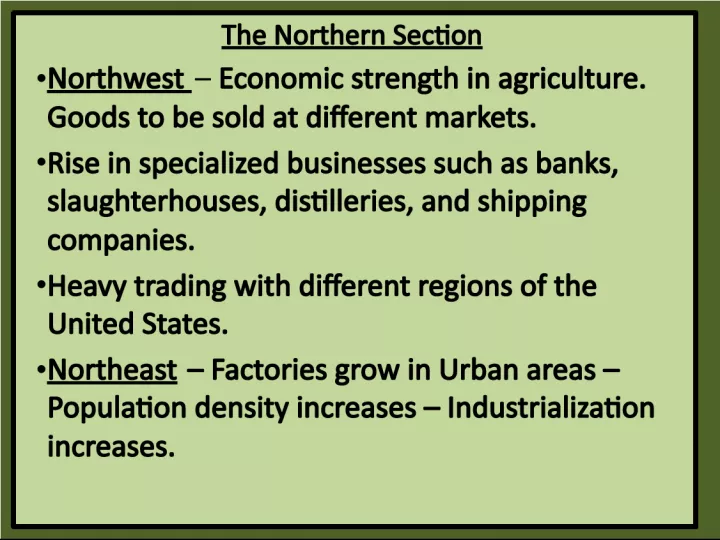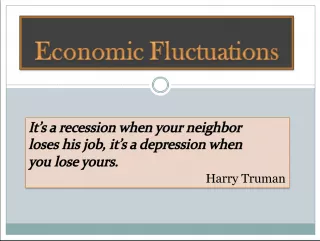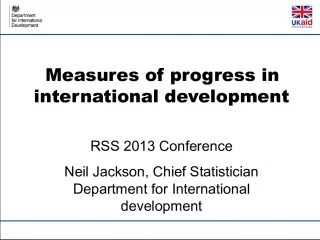The Economic Development of the Northern Section


The Northern Section of the United States saw significant economic growth during the 19th century. In the Northwest, agriculture continued to be a major economic strength, with goods being sold at different markets
- Uploaded on | 0 Views
-
 halvard
halvard
About The Economic Development of the Northern Section
PowerPoint presentation about 'The Economic Development of the Northern Section'. This presentation describes the topic on The Northern Section of the United States saw significant economic growth during the 19th century. In the Northwest, agriculture continued to be a major economic strength, with goods being sold at different markets. The key topics included in this slideshow are . Download this presentation absolutely free.
Presentation Transcript
Slide1The Northern Section• Northwest – Economic strength in agriculture. Goods to be sold at different markets. • Rise in specialized businesses such as banks, slaughterhouses, distilleries, and shipping companies. • Heavy trading with different regions of the United States. • Northeast – Factories grow in Urban areas – Population density increases – Industrialization increases.
Slide2The Northern Section• Growth in industry a result of inventions such as interchangeable parts. • Tremendous growth in cities with a large % of workers being women. • More time spent away from the home (Market Economy). • Growth of hospitals and school to deal with that situation. • Growth of Tenement buildings that were crowded and had very poor conditions • Fear of disease (cholera)
Slide3The Northern Section• Rise in labor disputes led to the growth of Labor Unions such as the NTU – National Trades Union. • Rise in tensions between employers and employees.
Slide4The Southern Section• ** King Cotton – 1860 Cotton made up 2/3 of the value of American exports. Economy based on cotton production. • Mostly rural country and the weather encouraged agriculture. • Slow urban growth but some cities like New Orleans and Charleston grew. • Sharp increase in slave population…slave trade grew at enormous rates (considered property). – 1820 – 1.5 million slaves – 1850 – 3.2 million slaves
Slide5The Southern Section• Small Farms had less cruel conditions than large plantations. • Revolts were unsuccessful. • Vesey – free slave that preached against slavery. Led an uprising in Charleston in 1822. • Turner’s Rebellion – Uprising by slave against white families in 1831. • Southerners began to fear these uprisings so they increased restrictions on slave activities.























